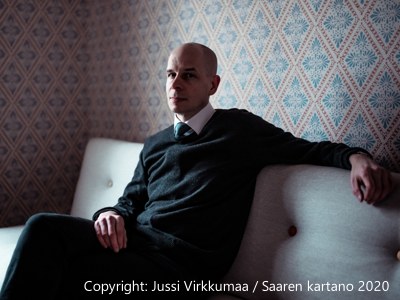Instrumentation: Flute (doubling Picc., Bass fl.), Clarinet in Bb (doubling Cl. in A and Eb), Violin, Viola, Cello, Piano
Duration: ca. 17‘
Publisher: Schott Music
Commissioned by the Senate of Berlin
FP: 3.11.2007, Berlin (Modern Art Sextet)
Further performances:
23.11.2009, Konzerthaus Berlin
15.6.2011, Nikolassaal Potsdam
2.12.2011, Kulturrathaus Dresden
12.3.2014, Villa Concordia Bamberg (Ensemble musikfabrik, Ltg.: Johannes Schöllhorn)
CD: WERGO (courage – Dresdner Ensemble für zeitgenössische Musik/Titus Engel)
Introduction:
Anfänge/Netze (Malbork II) is the core of a loose sequence of chamber music pieces dealing with the work of Italo Calvino, especially with his Six Memos for the Next Millennium and the novel Se una notte d’inverno un viagiattore.
The title refers to an extraordinary enigmatic chapter heading in this book, „Fuori dall’abitato di Malbork“ („Outside the town of Malbork“). The narration technique of the novel is elaborate: the story seems to start anew with each chapter, but also collects characters and plot elements from these beginnings to form a colourful and complex network.
Each new beginning is continuate by a reflecting intersection, and this playing with ‚beginnings‘ and ‚continuations‘ is the point of origin for the musical structure of my sextet. The compositional challenge is evident: how can a musical language that does not use simple, generally understandable formal signals, define a ‚beginning‘ in the middle of a process, when does the beginning end and its continuation start? Almost automatically, the narrative strategie of Calvino’s novel is transferred to the musical dramaturgy: in each beginning, one will find traces of preceding or following events. Some new openings are at the same time results of developments that started way beforehand. In the same way, some continuations emerge organically and only vaguely delimited, while others are clear insertions or parentheses, partly reflecting sounds from remote sections of the piece.
Thus, the seemingly simple pulse of (altogether nine) ‚beginnings‘ and (eight) continuations is being obscured by a certain fuzziness, the clear shape is blurring, especially because the borders of these ‚chapters‘ often do not coincide exactly in all six instruments.
As stabilising superstructure for these rather complicated references serves a clear subdivision into four bigger sections with contrasting tempo: a moderate initiation, a very fast, virtuoso intersection, an extended an manifold slow movement and a speedy, soon decaying conclusion, that only in the very end is pulled together into a last beginning that remains uncontinued.
